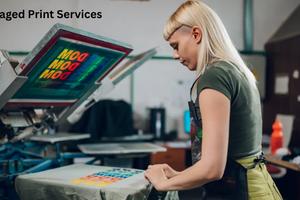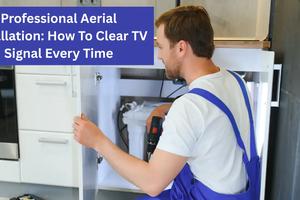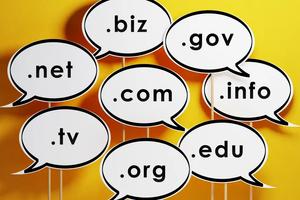Remote Terminal Units (RTU): From Architecture To Applications In SCADA Systems

Key Takeaways
Essential insights to remember
RTUs are microprocessor-based devices that interface physical equipment with SCADA systems for remote monitoring and control
Modern RTUs support multiple communication protocols and can operate in harsh environmental conditions
RTUs differ from PLCs in terms of communication capabilities, ruggedness, and application scenarios
Selection of RTUs depends on factors like capacity, environment, control requirements, and connectivity needs
Introduction to Remote Terminal Units (RTUs) 🔧
In the ever-evolving landscape of industrial automation, Remote Terminal Units (RTUs) stand as the vigilant sentinels of modern control systems. These microprocessor-controlled electronic devices serve as the crucial bridge between the physical world and supervisory control systems, embodying the principle of "eyes and ears in the field."
Understanding RTU Basics 🤖
Remote Terminal Units, also known as remote telemetry units or remote telecontrol units, function as the fundamental building blocks of industrial automation systems. Think of them as the diligent field reporters, constantly gathering and transmitting critical data from the frontlines of industrial operations.
““"RTUs are the unsung heroes of industrial automation, working tirelessly to ensure seamless communication between field devices and control centers." - Industrial Automation Weekly
Core Functions of RTUs
- Data Acquisition 📊
- Continuous monitoring of field parameters
- Real-time data collection
- Signal processing and conditioning
- Remote Terminal Units (RTUs) automate data collection and make analysis easier
- Control Operations ⚙️
- Remote device management
- Automated response systems
- Process optimization
Historical Evolution 📈
The journey of RTUs from simple data collectors to sophisticated control units mirrors the evolution of industrial automation itself. Born in the era of basic telemetry, these devices have transformed into intelligent field units capable of complex operations and autonomous decision-making.
Modern RTU Characteristics
- Advanced Processing Capabilities
- Multi-protocol Support
- Enhanced Security Features
- Robust Environmental Resistance
Integration in Modern Systems
RTUs have become indispensable in various industries, from oil and gas to water treatment facilities. Their ability to operate in harsh environments while maintaining reliable communication makes them the backbone of modern SCADA (Supervisory Control and Data Acquisition) systems.
How RTUs Work: Architecture and Components 🛠️
The architecture of Remote Terminal Units represents a masterful integration of hardware and software components, each playing a vital role in the symphony of industrial control. Let's delve into the intricate makeup of these sophisticated devices.
Core Processing Unit 💻
At the heart of every RTU lies its Central Processing Unit (CPU), the command center that orchestrates all operations.
Input/Output Modules 🔌
Analog Input Module
- Voltage Ranges: 0-1mA, 4-20mA, 0-10V
- Resolution: 8-12 bits standard
- Sampling Rate: 10μs - 30ms
““"The precision of an RTU's I/O modules determines the accuracy of your entire control system." - Automation Expert Quarterly
Communication Architecture 📡
Hardware Interfaces
- RS-232/RS-485 Serial Ports
- Ethernet Connections
- Wireless Modules
- Fiber Optic Interfaces
Protocol Support
- Industrial Standards
- Modbus RTU/TCP
- DNP3
- IEC 60870-5-101/104
- PROFIBUS
Power Supply System ⚡
RTUs employ sophisticated power management systems to ensure uninterrupted operation:
Environmental Protection 🌡️
- Temperature Resistance: -40°C to +85°C
- Humidity Tolerance: 5-95% non-condensing
- Ingress Protection: IP66/67 ratings common
Watchdog Systems 🔍
- Real-time monitoring
- Automatic system recovery
- Fault detection and reporting
Key Functions and Applications of RTUs 🏭
The versatility of Remote Terminal Units manifests in their diverse applications across industrial landscapes. These robust devices serve as the cornerstone of modern industrial automation, performing critical functions in various sectors.
Primary Functions 🎯
““"RTUs transform raw field data into actionable intelligence, enabling informed decision-making in real-time." - Industrial Automation Magazine
Industry-Specific Applications 🌐
Oil and Gas Industry ⛽
- Upstream Operations
- Well monitoring
- Pipeline surveillance
- Production optimization
- Downstream Operations
- Refinery process control
- Storage tank monitoring
- Distribution management
Water and Wastewater 💧
- Treatment Plant Monitoring
- Distribution Network Control
- Quality Parameter Tracking
- Pump Station Management
Power Distribution ⚡
- Grid Monitoring
- Voltage regulation
- Load balancing
- Fault detection
- Substation Automation
- Equipment status
- Power quality monitoring
- Protection systems
Smart City Applications 🏙️
- Traffic management
- Street lighting control
- Waste management
- Public safety systems
RTU vs PLC: Understanding the Differences 🔄
In the realm of industrial automation, distinguishing between Remote Terminal Units (RTUs) and Programmable Logic Controllers (PLCs) is crucial for optimal system design. Let's explore their fundamental differences and unique characteristics.
““"While PLCs excel in rapid local control, RTUs are the champions of remote monitoring and wide-area operations." - Industrial Control Systems Guide
Operational Characteristics 🔧
RTU Strengths 💪
- Communication Flexibility
- Multiple protocol support
- Long-range capabilities
- Wireless optimization
- Data Management
- Advanced data logging
- Time-stamping
- Event-based recording
PLC Advantages ⚡
- Fast execution speeds
- Complex logic operations
- Local process control
- Quick response times
Programming and Configuration 💻
RTU Programming
- Simpler configuration interfaces
- Web-based setup options
- Protocol-focused programming
PLC Programming
- Ladder logic
- Function block diagrams
- Structured text
Integration Capabilities 🔄
- RTU Integration
- SCADA systems
- Cloud platforms
- IoT networks
- PLC Integration
- Local HMI systems
- Factory automation
- Production lines
Selection Criteria for RTUs 🎯
Choosing the right Remote Terminal Unit requires careful consideration of multiple factors to ensure optimal performance and reliability in your specific application. Let's explore the crucial selection criteria that determine RTU effectiveness.
Environmental Considerations 🌍
““"The harshest environments demand the most robust RTUs - choose wisely, as your system is only as strong as its weakest link." - Industrial Automation Expert
Capacity Requirements 📊
Processing Power
- CPU Specifications
- Processing speed
- Memory capacity
- Execution cycle time
- I/O Capacity
- Number of inputs/outputs
- Types of signals supported
- Expansion capabilities
Communication Protocol Support 🔌
Essential Protocols
- Modbus RTU/TCP
- DNP3
- IEC 60870-5-101/104
- MQTT for IoT
Power Management 🔋
Power Source Options
- Primary Power
- AC mains supply
- Solar power systems
- Battery backup
- Backup Solutions
- UPS systems
- Redundant power supplies
- Low-power modes
Vendor Considerations 🤝
- Reputation and reliability
- Technical support availability
- Warranty terms
- Upgrade path availability
Implementation in Modern SCADA Systems 🌐
The integration of Remote Terminal Units into Supervisory Control and Data Acquisition (SCADA) systems represents a crucial advancement in industrial automation. Understanding this implementation is key to maximizing system efficiency and reliability.
System Architecture Overview 🏗️
Data Flow Management 📊
Real-Time Processing
- Data Acquisition
- Continuous monitoring
- Event-based recording
- Exception reporting
- Data Transmission
- Protocol conversion
- Data packaging
- Error checking
““"Effective SCADA implementation relies on seamless RTU integration and reliable data flow management." - SCADA Systems Journal
Integration Challenges 🚧
Common Issues
- Protocol compatibility
- Network reliability
- Data security
- System scalability
Security Implementation 🔒
Security Layers
- Physical Security
- Access control
- Environmental protection
- Hardware redundancy
- Cyber Security
- Encryption
- Authentication
- Firewall systems
Future Trends and Developments 🚀
The evolution of Remote Terminal Units continues to accelerate, driven by technological advancements and changing industrial needs. Let's explore the emerging trends and future developments shaping RTU technology.
IoT Integration 📱
““"The convergence of RTUs with IoT technology is revolutionizing how we think about industrial automation." - Digital Transformation Quarterly
Advanced Analytics Capabilities 📊
AI and Machine Learning Integration
- Predictive Analytics
- Equipment health monitoring
- Failure prediction
- Performance optimization
- Smart Algorithms
- Pattern recognition
- Anomaly detection
- Self-optimization
Enhanced Communication 📡
Next-Gen Protocols
- 5G Integration
- Low-Power Wide Area Networks
- Advanced encryption standards
- Mesh networking capabilities
Cybersecurity Advancements 🔒
- Enhanced Security Features
- Blockchain integration
- Zero-trust architecture
- Biometric authentication
- Threat Detection
- AI-based monitoring
- Real-time response
- Automated quarantine
Conclusion 🎯
The evolution of Remote Terminal Units marks a significant milestone in industrial automation. From their humble beginnings as simple data collection devices to becoming sophisticated control units, RTUs continue to shape the future of industrial monitoring and control systems. As we move toward more connected and intelligent industrial environments, RTUs will play an increasingly crucial role in bridging the gap between field operations and supervisory control systems.





